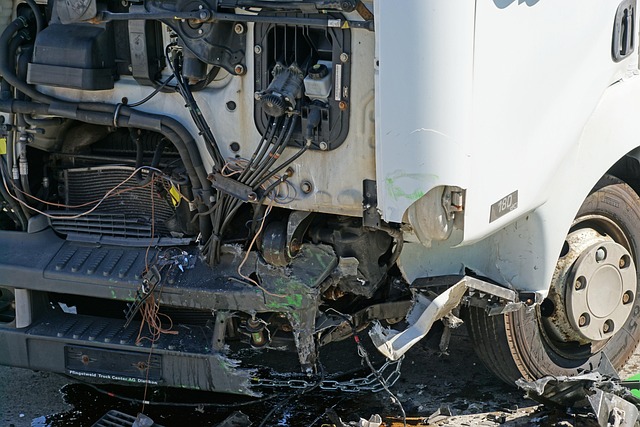Collision coverage is a critical aspect of auto insurance, protecting drivers from financial loss due to accidents by covering repair/replacement costs (including labor, rentals, and medical bills). However, it has exclusions for intentional damage, normal wear & tear, and weather events. Choosing the right collision provider involves selecting reputable shops with expertise in various repairs, offering transparent pricing, warranties, and consistent communication. Top-rated centers provide advanced technology, high-quality service, and peace of mind. Comprehensive collision coverage offers broader protection against incidents like floods, theft, and vandalism, including rental car reimbursement. Filing a claim requires prompt documentation and understanding policy terms. Future trends include ADAS and connected cars, potentially transforming collision coverage through data-driven models and improved risk assessment.
Collision coverage is an essential aspect of auto insurance, providing financial protection against unexpected vehicle damage. This comprehensive guide delves into the intricacies of reliable collision coverage services, offering valuable insights for drivers. We explore what collision coverage entails, crucial factors to consider while choosing a service, and top-rated repair centers. Additionally, we discuss benefits, common mistakes to avoid, and emerging trends shaping the future of collision coverage. Understanding these elements empowers informed decisions, ensuring peace of mind on the road.
Understanding Collision Coverage: What It Covers and Exclusions

Collision coverage is an essential aspect of auto insurance, designed to protect drivers and their vehicles in the event of a crash. This type of coverage pays for repairs or replacement costs when your vehicle experiences damage due to a collision with another object or vehicle. It typically covers both tangible and intangible expenses, including repair or replacement parts, labor fees, rental cars while yours is being repaired, and even medical bills if you or your passengers are injured in the accident.
However, it’s crucial to understand that collision coverage has its exclusions. Common exclusions include damage caused by intentional acts, such as vandalism or theft, normal wear and tear, and certain types of weather-related incidents like floods or earthquakes. Additionally, collision coverage usually does not apply if your vehicle is deemed at fault for the accident, unless you have added specific provisions to your policy for such cases. Knowing these exclusions helps in making informed decisions when choosing the right collision coverage for your needs.
Factors to Consider When Choosing a Reliable Collision Coverage Service

When selecting a reliable collision coverage service, several key factors come into play. Firstly, assess the provider’s reputation and experience in handling collision-related repairs. Look for companies with a proven track record, positive customer reviews, and specialized knowledge in automotive bodywork and painting. Reputable shops often have certified technicians who stay updated with the latest industry standards and technologies.
Additionally, consider the scope of services offered, including body shop repair, paintless dent repair, and mechanical adjustments if necessary. Check if they provide transparent pricing, detailed estimates, and flexible payment options. A reliable service should also guarantee quality workmanship, use high-grade materials, and offer a warranty on their repairs. Ensure they have excellent communication and customer support throughout the process, keeping you informed about your vehicle’s progress.
Top-Rated Collision Repair Centers and Their Features

Top-rated collision repair centers are more than just places to fix damaged vehicles; they’re hubs of expertise and customer service. These facilities often boast state-of-the-art equipment, allowing them to handle even the most complex repairs with precision and speed. Many offer a range of services beyond basic fixing, including paintless dent repair, glass replacement, and specialized body shop work.
What truly sets these centers apart is their commitment to customer satisfaction. They prioritize clear communication, providing transparent estimates and keeping clients updated throughout the process. Additionally, they use high-quality parts and materials, ensuring that repairs not only look good but also last. Reliable collision coverage isn’t just about fixing cars; it’s about restoring peace of mind for drivers who’ve been involved in accidents.
Benefits of Having Comprehensive Collision Coverage

Having comprehensive collision coverage offers several significant advantages for drivers. One of the primary benefits is financial protection. In the event of a collision, this type of coverage can help pay for damages to your vehicle, up to its actual cash value, even if it’s deemed at fault. This can be a substantial relief, as unexpected accidents can lead to costly repairs or total vehicle replacement.
Additionally, comprehensive collision coverage provides peace of mind by ensuring that you’re protected against various types of incidents, including natural disasters like floods or storms, theft, vandalism, and even animal-related damage. It also often includes rental car reimbursement during the repair period, making it easier to maintain your daily mobility without incurring extra expenses.
Common Mistakes to Avoid When Filing a Collision Claim

When filing a collision claim, many individuals make mistakes that can hinder their coverage and benefits. One common error is failing to document and report all details of the incident promptly. Time is of the essence in collision claims; witnesses should be interviewed while memories are fresh, and evidence like photos or video footage should be collected immediately after the accident.
Another mistake is not thoroughly reviewing your insurance policy before filing a claim. Every policy has specific requirements and exclusions for collision coverage, including deductibles and eligible repairs. Misunderstanding these terms can lead to delays or even rejection of your claim. Always ensure you understand what’s covered, what’s excluded, and what steps are needed to initiate the claims process as per your policy’s guidelines.
The Future of Collision Coverage: Emerging Trends and Technologies

The future of collision coverage is shaped by emerging trends and technologies that promise to transform the automotive industry. One notable shift is the integration of advanced driver-assistance systems (ADAS) which, with features like autonomous emergency braking and lane departure warning, are designed to prevent accidents altogether. As these systems become more sophisticated and widespread, the need for traditional collision coverage could evolve significantly.
Additionally, the rise of connected cars and the Internet of Things (IoT) opens new avenues for data-driven insurance models. These technologies allow for real-time tracking of vehicle behavior, driver habits, and environmental conditions, potentially enabling insurers to offer more personalized and dynamic collision coverage policies. This shift could lead to more accurate risk assessment and pricing, benefiting both insurance providers and policyholders.
